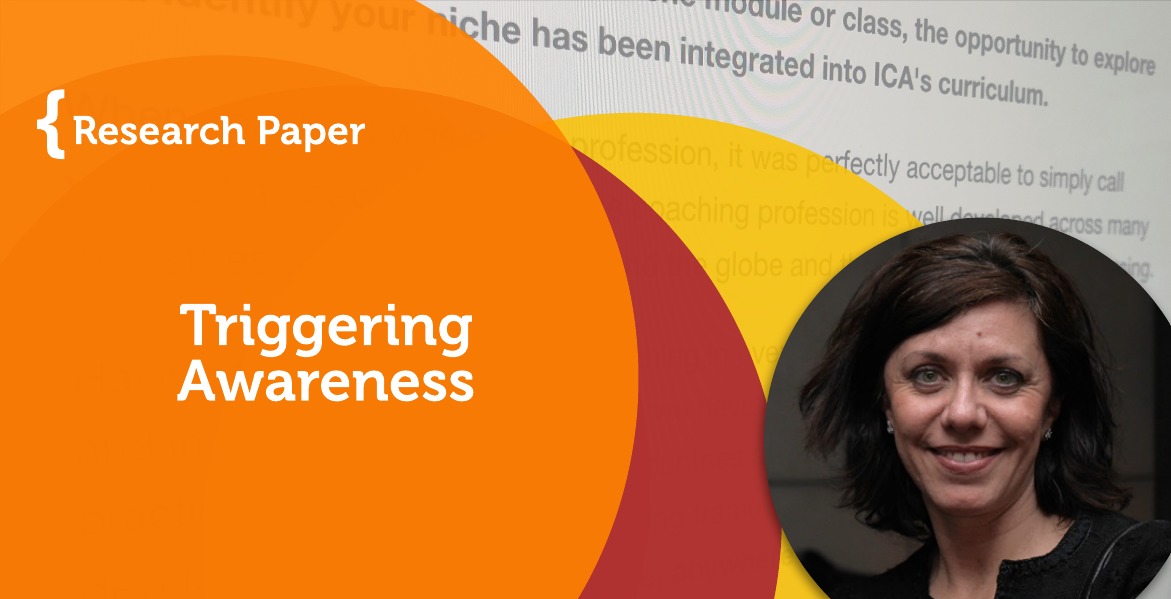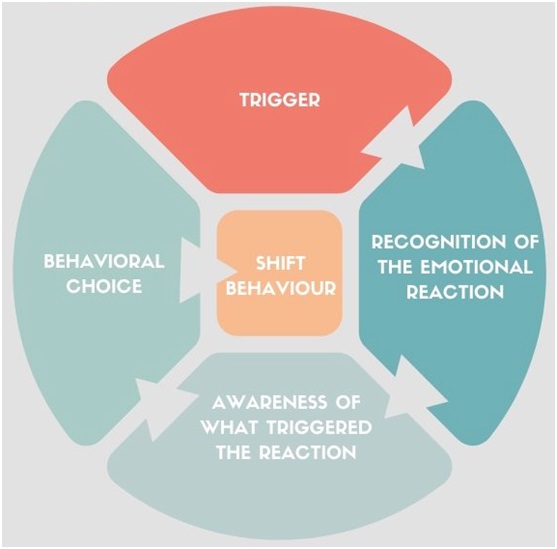 Research Paper By Maria Elena Mellara
Research Paper By Maria Elena Mellara
(Career Coach, NETHERLANDS)
Background
Without a trigger, there is no path to awareness (unknown).
Trigger (noun) gun part. A part of a gun that causes the gun to fire when pressed.
(noun) start. An event or situation, etc. that causes something to start.[1]
Awareness (noun): knowing that something exists, or understanding of a situation or subject at present based on information or experience.[2]
The phrase “fight or flight” was coined by Cannon in the 1920s to describe key behaviors that occur in the context of perceived threat. This term has not only been influential in later conceptual and empirical work on anxiety and its disorders, but the phrase also has become relatively well-known in popular culture. In the context of anxiety research, the alarm or fear response described by Barlow (2002) reflects an interaction between learning and innate, biological systems designed to help animals adapt to threat. The more contemporary notion of a true or false alarm still contains the two primary features of Cannon’s original expression, though the ordering of effects is probably best reversed; flight is the overwhelming action tendency after an alarm whereas relatively fewer instances of fight responses result from threat (Lang, 1994). Part of Barlow’s (2002) description of an adaptive alarm model suggests that a freeze response may occur in some threatening situations. Specifically, freezing – or tonic immobility – may overwhelm other competing action tendencies. For example, when fleeing or aggressive responses are likely to be ineffective, a freeze response may take place.[3]
Process
 fig.1
fig.1
In one of her articles from Marcia Reynolds writes about the 5 steps to manage emotional triggers[4]
The first step is to accept responsibility for the reaction. “When you seek to identify what is triggering how you feel in the moment, you give yourself the chance to feel differently if you want to. You will also have more clarity on what you need to do or what you need to ask for to change your circumstances.”[5]
The second step is to recognize you are having an emotional reaction in your body. Short of breath, the tension in the muscles, dizziness. Whatever the reaction is, it should not be labeled, but just acknowledged.
The third step is to understand what triggered that emotion. In this case, the trigger is the activation of behavior based on positive or negative experiences from our past. Neuroscientist Antonio Damasio writes: “the emotions allow us to label things as ‘good’, ‘bad’ or ‘neutral’.[6]
At this stage, the awareness starts to kick in our system and we can shift from trigger to awareness. What we also need to be aware of is that triggers and responses to them will never go away, but with time we will be able to manage them differently.
The fourth step is what you want to feel and what you want to do about it. Here some scenarios unfold in front of us.
In my power tool “power of try vs. power of doing” we always have a choice based on experience as well as how much we believe in them. When in front of a trigger and consequent emotion, we can choose not to do. Ignoring engage a sort of “brain laziness”, which works perfectly if the trigger is “I once put a foot in a puddle and it wetted and ruined my shoes therefore when I see a puddle I will not put a foot in it again”. It starts to be more difficult to manage if the trigger influences heavily – to the point of being frozen and therefore no action at all – professional, family, and personal choices.
If we, instead choose the then the choice is ours. As Yoda says: “There is no try”.
The fifth step is shifting your emotional state. Go beyond the trigger, be aware of what is happening, and then – as I describe in my coaching tool – you are ready for the last part of the T.W.I.S.T. (Triggering Ways to Ignite Systematic Transformation)which is – indeed – the Transformation.
Conclusion
As shown in fig.1 the awareness is part of a circular process that starts with a (un)conscious trigger, followed by an emotional behavior, then the awareness of the emotion is discovered and the reason for the behavior is understood. At this point, there is a choice, the willingness (or not) to change the behavior. The dilemma is solved if there is an eagerness to know more and be aware more. Awareness is an agent of change/transformation and is positioned within the path of personal development (Robert Puff)[7].
References
https://dictionary.cambridge.org/dictionary/english/trigger
https://dictionary.cambridge.org/dictionary/english/awareness
https://www.ncbi.nlm.nih.gov/pmc/articles/PMC2489204/
https://thelab.mentorlabgroup.com/posts/oltre-i-trigger
https://www.psychologytoday.com/intl/blog/meditation-modern-life/201203/awareness-is-agent-change